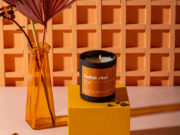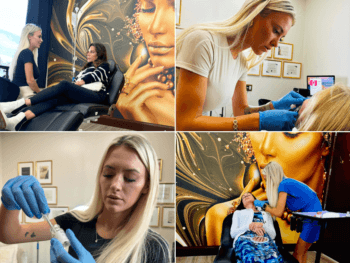
Dr. Kunaal Jindal, a plastic and reconstructive surgeon and an associate at Edelstein Cosmetic in Toronto, gives us the scoop on Botox injections and outlines everything you should consider before undergoing the popular cosmetic treatment.
As the popularity of cosmetic treatments rises, patients are frequently turning to less invasive procedures to attain a natural and refreshed look. Patients of all ages are becoming increasingly interested in Botox as an alternative to aesthetic surgery or as a temporizing measure to delay the need for such procedures. In 2013, 6.3 million Botox treatments were performed in the United States alone, making it the most common cosmetic procedure. South Asians form a rapidly growing demographic seeking non-surgical aesthetic enhancements. Treatment with Botox has the benefit of avoiding surgical scars and achieving a youthful appearance while maintaining discretion, all of which are important considerations, particularly for South Asian patients.
What is Botox?
Botulinum toxin type A (Botox or Dysport) is a neuromuscular blocking agent that inhibits the release of the neurotransmitter acetylcholine, preventing the communication between the motor nerves and the muscles they control. When the muscles of facial expression contract, the skin forms wrinkle lines perpendicular to the direction of muscle contraction. As we age, these wrinkles become more prominent and even remain in the absence of facial animation. Botox functions by decreasing the action of the muscle, thereby reducing the appearance of skin wrinkles and effectively reversing the signs of facial aging. It is important to differentiate Botox from dermal fillers which are commonly known as hyaluronic acids used to restore volume in areas of the face that have become deflated.
What areas does Botox treat?
Botox is typically used to treat wrinkles in the upper face including the brow, forehead and crow’s feet in the area around the eyes. The horizontal lines that appear across the forehead result from the contraction of the frontalis muscle which acts to raise the eyebrows. Injecting Botox in this area chemically weakens the muscle without totally paralyzing it, allowing patients to preserve expressive features while treating their cosmetic concerns. The brow depressor muscles (responsible for the vertical and horizontal frown lines that occur between the eyebrows and at the top of the nose) and the circular muscle around the eyelids (responsible for crow’s feet beside the eyes) are also popular areas for injections. Botox can also be used for the treatment of bunny lines on the nose, down-turned corners of the mouth, wrinkles around the mouth and chin and banding of the muscles across the neck.
How long does it take?
Botox treatments are performed in the office and are quick and relatively painless. It generally takes 30 minutes to meet with your physician, assess the areas of concern, discuss the risks and finish the injections. There is no preparation required and patients can return to regular activities immediately afterwards. The effects are visible five days after the treatment with maximum effect at two weeks, and can last between four to six months.
Who should avoid Botox?
Botox is contraindicated in the presence of an infection at the site ofinjection. It is also contraindicated in patients with a known hypersensitivity or allergy to any of its ingredients, including human and egg albumin. Botox is not recommended for pregnant or breastfeeding women. It should be administered with caution in patients taking aminoglycoside antibiotics and in patients with neuromuscular diseases.
Are there any complications?
As with any procedure, following a Botox injection patients can experience complications including unanticipated diffusion of toxin exaggerated effects. Other adverse events may include bruising, headache, infection and allergic reactions. Seeking a certified professional to perform the procedure and to discuss the right treatment plan for you can minimize these risks. It is imperative to discuss all the potential complications with your doctor prior to treatment. If you are interested in finding out if you are a good candidate for Botox, visit a board certified plastic surgeon or dermatologist in your area to discuss your options.
PUBLISHED IN THE HOME & TRAVEL ISSUE, MAY 2015














































































































